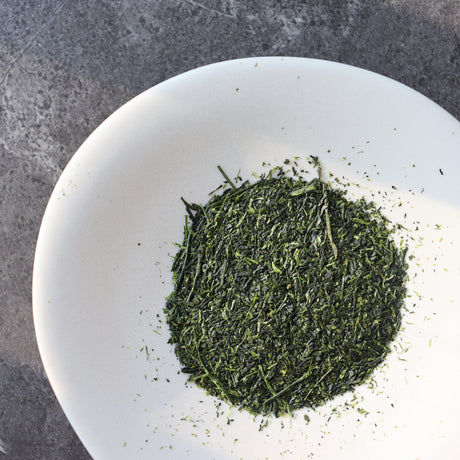

竹製の茶筅、茶杓、その他の茶道具
(11点の商品)すべての商品茶筅茶杓
茶道具の種類とバリエーションは無限にありますが、ここではまず基本的なものから始めて、充実したカタログを構築したいと考えています。また、急須、カップ、茶碗を除く、お茶を楽しむための道具全般もここに集めています。
茶筅について
-
抹茶を楽しむのに欠かせない道具の一つが、茶筅です。茶筅は竹でできた碾きで、粉の塊をほぐすのに役立ちます。最高級の抹茶で楽しむ、濃厚な濃茶(ペースト状)を作るのも、茶筅があれば簡単です。また、茶筅を使えば、薄茶(一般的に抹茶ドリンクとして宣伝されているもの)の泡を作ることができます。
-
注:現在、茶筅のほとんどは中国製で、日本でもごく少数の職人が高品質な茶筅を作っています。番手が高いほど泡立ちやすくなりますが、「80」以上の数字は必ずしも正確な数字ではありません。より低い番手の茶筅を使って、上手に泡立てる腕前を披露しましょう。
泡立て器ガイド
「数」はおおよその歯数を表しており、正確な数ではありません。歯の数が多いほど、泡立ちが良くなります。しかし、これは必ずしも品質が良いことを示すものではありません。茶道の流派によっては、泡立ちを好ましく思わないところもあります。茶道最大の流派である裏千家では、泡立ちが均一であることが望ましいと教えており、そのため、茶道を習わない人々の間では、これが標準となっています。
形状:裏千家の基準に則り、先端が内側にカールした形状です。
番号 名前 16 平穂ヘイホ 32 荒穂 アラホ 48 中荒穂 なかあらほ 64 常穂・並穂 つねほ または なみほ 72 数穂・繁穂 かずほ または びんほ 80 八十本立(特に名前はなく、文字は「80本立」を意味します) 96 百本立(特に名前はなく、文字は「100本」を意味します) 120 百二十本立(特別な名前はありません、文字は「120本」を意味します)
- おすすめ順
- 人気順
- アルファベット順, A-Z
- アルファベット順, Z-A
- 価格の安い順
- 価格の高い順
- 古い順
- 新着順
商品は見つかりませんでした


